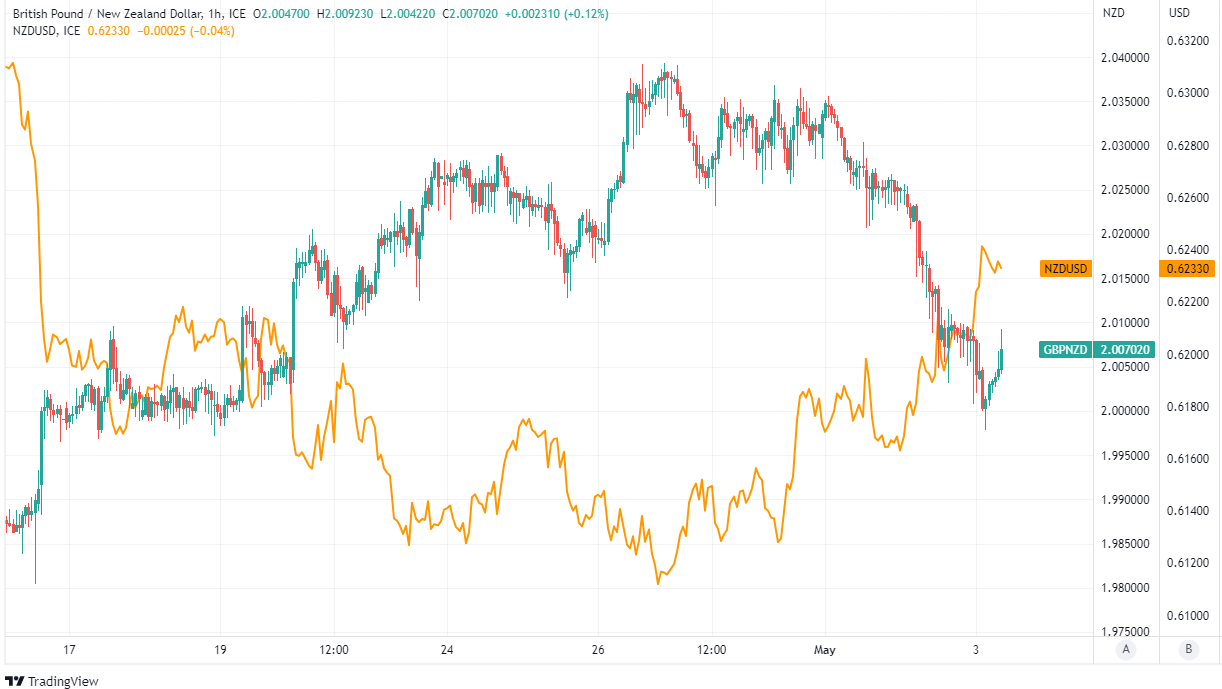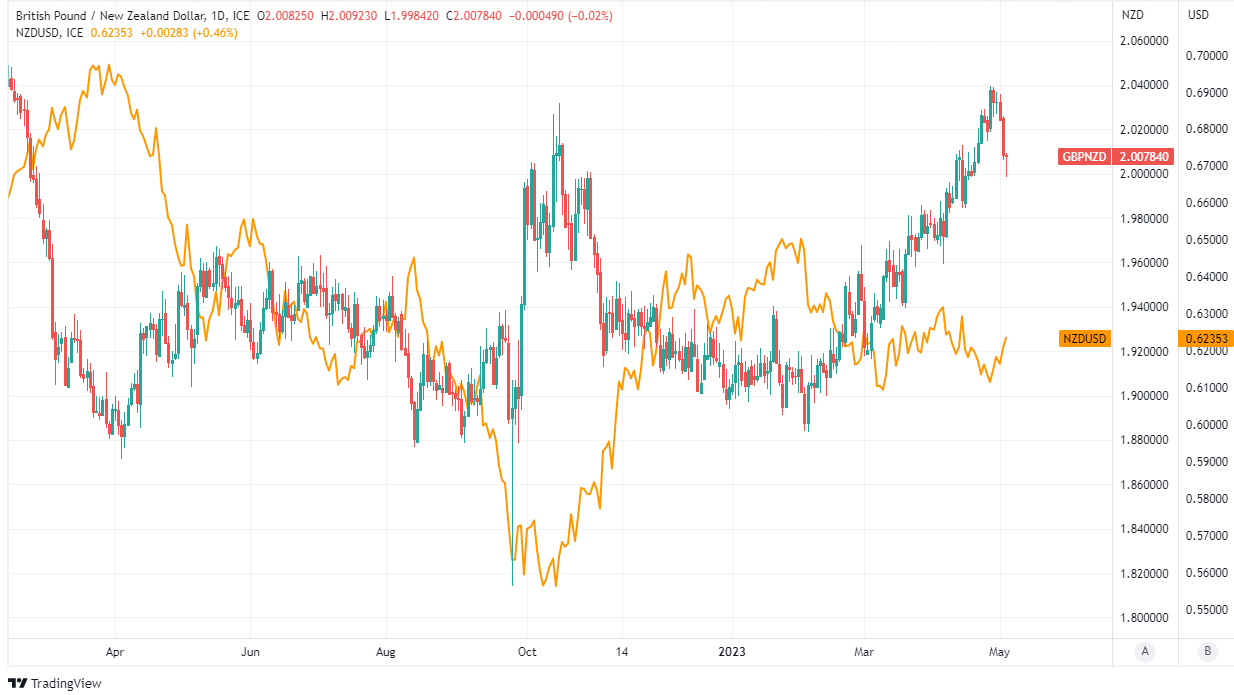Outperforming New Zealand Dollar and Resilient Data Weigh on GBP/NZD
"The heat is expected to start coming out of the labour market in the second half of 2023" Kiwibank.

Image © Adobe Stock
The New Zealand Dollar rose broadly in the midweek session as rising dairy prices and a resilient labour market appeared to weigh on GBP/NZD but the Kiwi's gains could be limited and short-lived if some economists are right in their interpretations of the data.
New Zealand's Dollar gave way to the Japanese Yen, Swiss Franc and Korean Won on Wednesday but was otherwise an outperformer among G20 currencies with one likely catalyst for being Statistics New Zealand's first-quarter employment report.
Stats NZ said employment rose 0.8% in the opening quarter, up from 0.2% in the final months of last year and twice the 0.4% increase economists were looking for, which helped keep the unemployment rate at 3.4% in the face of expectations for an increase to 3.5%.
"All up, today’s data show the labour market remained white-hot in Q1, and well beyond ‘maximum sustainable’ levels, although slightly weaker LCI wage growth than expected will be a welcome development for the RBNZ given its importance for non-tradables inflation," says Sharon Zollner, chief economist for New Zealand at ANZ.
Above: Pound to New Zealand Dollar rate at hourly intervals with NZD/USD. Click for closer inspection.
"Broadly speaking, the labour market is a little tighter than the RBNZ’s February forecast, but not outside the bounds of typical survey volatility. Taken together with the weaker-than-expected Q1 CPI print starting point, surprises at the upcoming May MPS certainly aren’t one-way traffic," Zollner and colleagues add.
Strong employment growth was counterbalanced by a migration-related increase in the size of the labour force and wage growth rates that were a tad softer than consensus expectations, albeit while remaining at levels the Reserve Bank of New Zealand (RBNZ) might consider unsustainable.
This is after the labour cost index rose by 0.9% for the quarter, down from 1.1% previously and below the 1% increase anticipated by economists, ultimately helping to limit the first quarter increase in the annualised measure of pay growth to a below-consensus 4.5%.
"It must be noted that the data is not only old, for the March quarter, it also lags economic activity. In a downturn, firms tend to cut hours rather than headcount, as they hold onto workers for as long as they can. And the downturn has well and truly begun," writes Jarod Kerr, chief economist at Kiwibank, in a review of the data.
Above: Pound to New Zealand Dollar rate at daily intervals alongside NZD/USD. Click for closer inspection.
"The heat is expected to start coming out of the labour market in the second half of 2023. It has to for inflation to retreat. We are forecasting the unemployment rate to begin lifting from around the middle of the year on its way to 5-5.5% in 2024," he adds.
While economists view the labour market as a "lagging indicator" of the economy, softening quarterly pay growth is potentially a leading indicator for inflation and Reserve Bank of New Zealand interest rate policy, which is one reason why there may be limits to how much the Kiwi can benefit from the data.
The RBNZ suggested with its February forecasts that its cash rate is likely to be raised to 5.5% later this year in order to ensure a timely return of inflation to its target level, although price pressures softened by more than was expected last quarter and now pay growth is following suit with uncertain implications for next week's policy decision.
"Our ASB colleagues still expect a 25bp hike on 24 May and a peak of 5.50%. But we remain bearish NZD/USD because of our outlook for lower dairy prices and a stronger USD," says Carol Kong, an economist and strategist at Commonwealth Bank of Australia.


